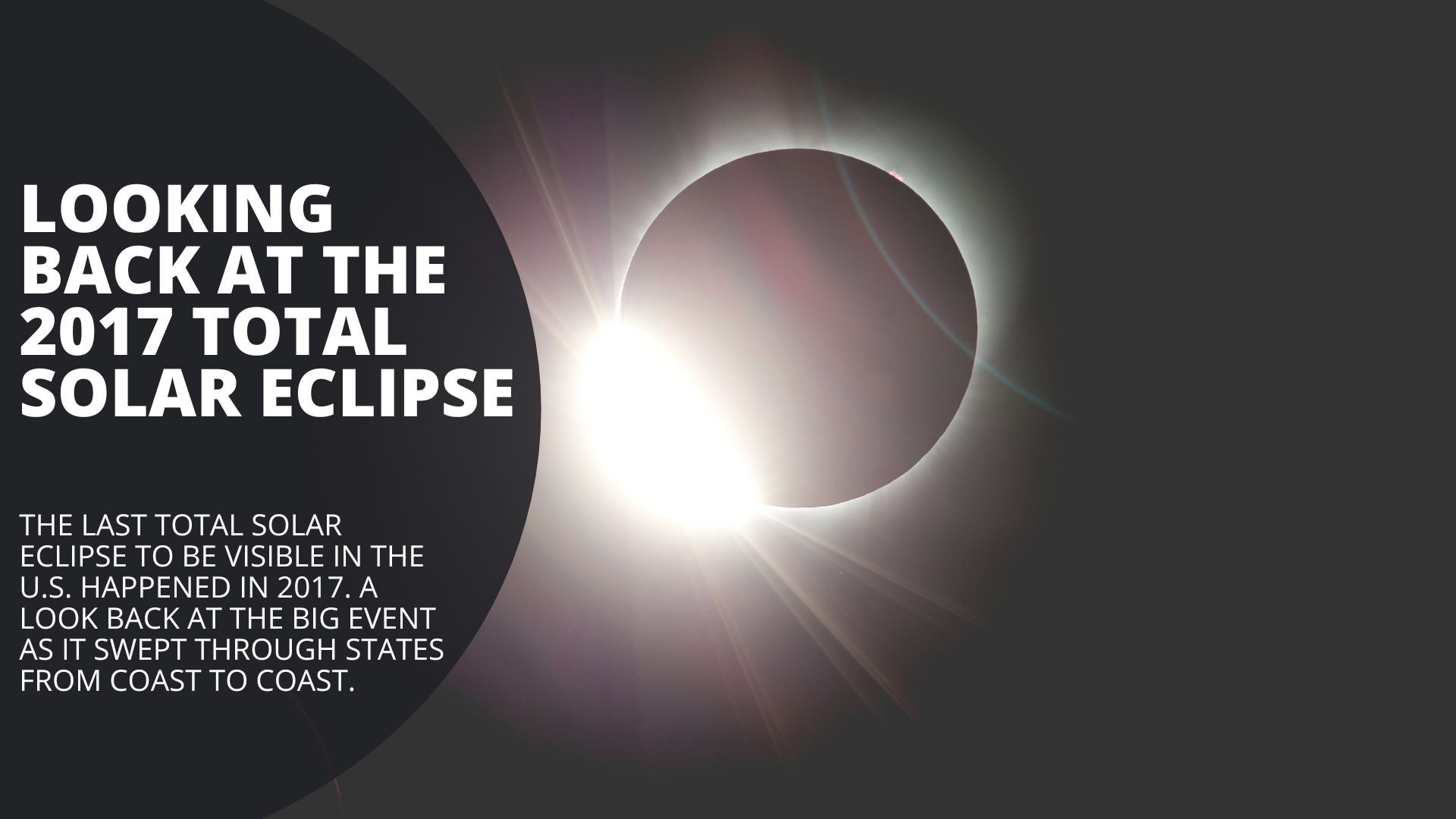WASHINGTON — In one week, a total solar eclipse will steal the spotlight as it turns day into night for millions from Texas to Maine.
It's been nearly seven years since the U.S. has seen a cross-country solar eclipse, and this time it will be bigger and longer than the one in 2017. Those in the path of totality, a 115-mile-wide stretch where the moon will fully cover the sun, are set to experience as much as four minutes of total darkness.
Don't fret if you're outside the carved-out path of totality as the remainder of the U.S. will still experience a partial solar eclipse. Even Hawaii and Alaska will be part of the fun.
When was the last solar eclipse in the US?
The last time the U.S. had a total solar eclipse from coast-to-coast was on Aug. 21, 2017.
More than 215 million U.S. adults viewed that celestial show, either in person or virtually, according to NASA.
Seven years ago, the path started in Oregon, stretched across the U.S. and exited through South Carolina. The path ranged from 62 to 71 miles wide, according to NASA.
The path of totality in 2024 will be twice as wide as the one in 2017 due to the moon's distance from earth during the eclipse.
When is the next solar eclipse after 2024?
North America won’t experience totality again until 2033, with Alaska getting sole dibs. Then that’s it until 2044, when totality will be confined to Western Canada, Montana and North Dakota.
There won’t be another U.S. eclipse spanning coast-to-coast until 2045. That one will stretch from Northern California all the way to Cape Canaveral, Florida.
How often does a solar eclipse occur?
Solar eclipses of all kinds happen more frequently than one might think.
NASA breaks down the math to about 2,380 solar eclipses of all kinds every 1,000 years — or roughly 2-3 solar eclipses each year. For total solar eclipses, where the moon completely covers the sun, it works out to two eclipses every three years.

